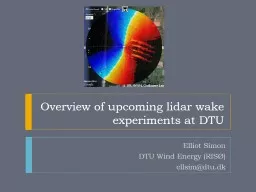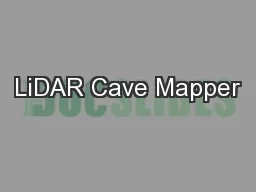PPT-Overview of upcoming lidar wake experiments at DTU
Author : clustik | Published Date : 2020-07-04
Elliot Simon DTU Wind Energy RISØ ellsimdtudk IBL WiSH Guillaume Lea Background DTU has developed a series of lidar instruments which can be used for turbine
Presentation Embed Code
Download Presentation
Download Presentation The PPT/PDF document "Overview of upcoming lidar wake experime..." is the property of its rightful owner. Permission is granted to download and print the materials on this website for personal, non-commercial use only, and to display it on your personal computer provided you do not modify the materials and that you retain all copyright notices contained in the materials. By downloading content from our website, you accept the terms of this agreement.
Overview of upcoming lidar wake experiments at DTU: Transcript
Download Rules Of Document
"Overview of upcoming lidar wake experiments at DTU"The content belongs to its owner. You may download and print it for personal use, without modification, and keep all copyright notices. By downloading, you agree to these terms.
Related Documents














